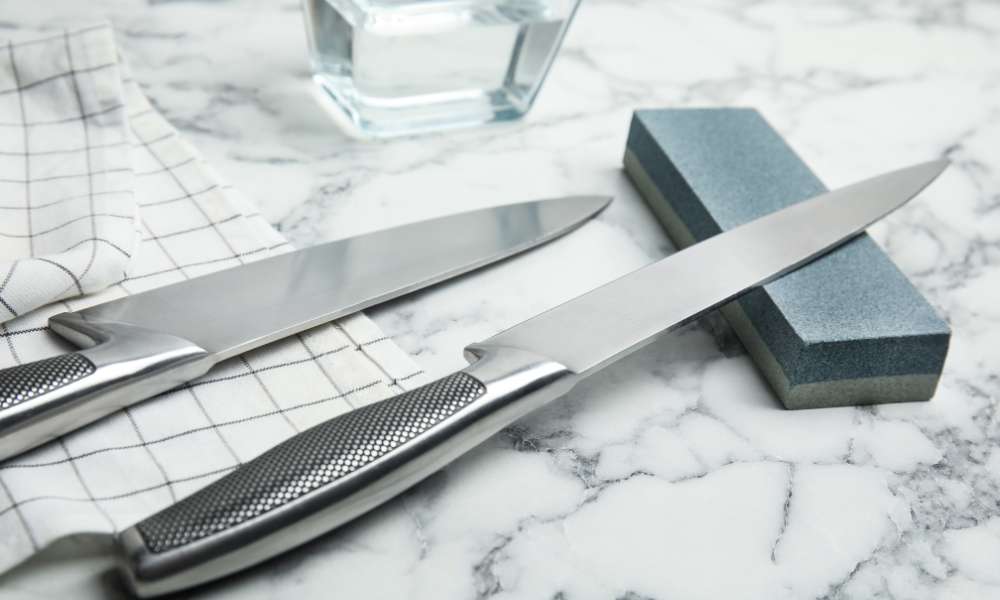Sharpening kitchen knives with a rod is an essential skill for maintaining the effectiveness and longevity of your kitchen tools. Using a honing rod, you can easily restore the sharpness of your knives, ensuring precise cuts and enhancing your cooking experience. The primary benefit of sharpening kitchen knives with a rod is the convenience it offers; it’s a quick and efficient way to keep your blades in top condition without the need for professional services. Additionally, regularly maintaining your knives with a rod can prevent dull blades, which can be dangerous and lead to accidents in the kitchen. By learning how to sharpen kitchen knives with a rod, you not only save time and money but also improve the safety and quality of your culinary tasks.
How Often Should I Sharpen My Knives?
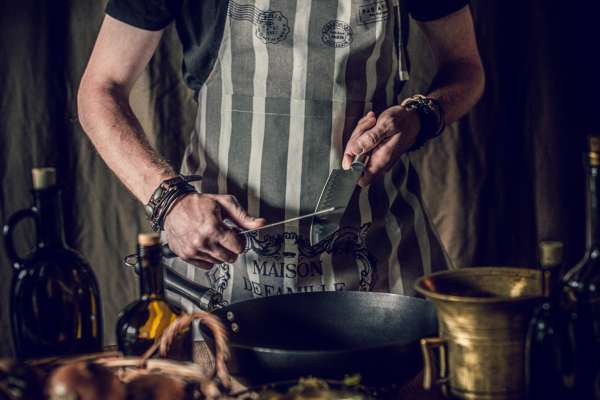
It is recommended to sharpen your knives regularly to maintain their sharpness and effectiveness. The frequency of sharpening will depend on how often you use your knives and the type of tasks they are used for. For home cooks who use their knives daily, it is generally suggested to sharpen them every 1-2 months. However, if you use your knives less frequently, you may be able to go longer between sharpenings.
Can I Use A Sharpening Rod On Any Knife?
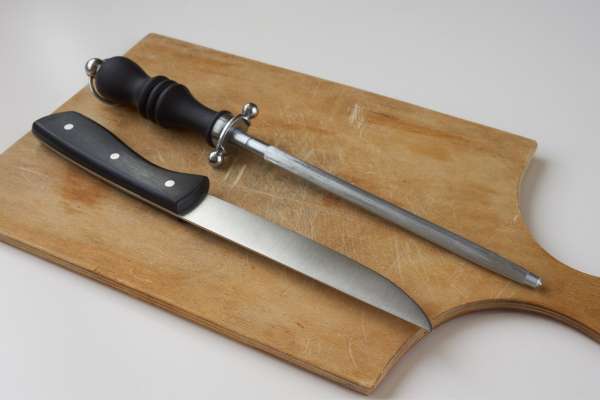
Before using a sharpening rod on your knife, make sure to read the manufacturer’s guidelines and recommendations. If you’re unsure about whether a particular knife is suitable for sharpening with a rod, it’s always best to consult with a professional or do some research to ensure you don’t inadvertently damage your knife.
What Are The Signs That My Knife Needs Sharpening?
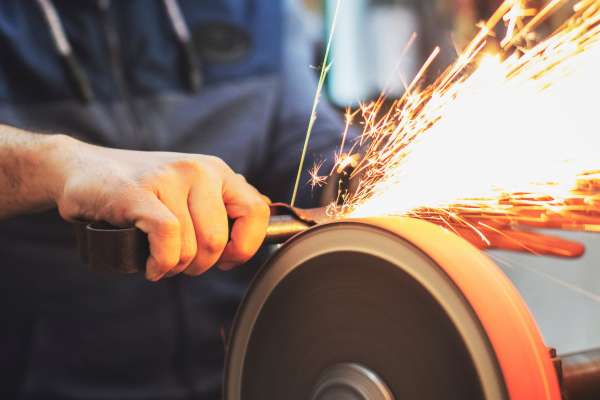
There are several signs that indicate your knife needs sharpening. One common sign is if you notice the blade is not cutting as easily or smoothly as it used to. If you find yourself having to use more force than usual to cut through food, it may be time to sharpen your knife. Another sign is if you see visible nicks or chips on the blade, which can affect its cutting ability.
Preparation Before Sharpening
1. Safety First
Before you begin sharpening kitchen knives with a rod, safety should always be your top priority. Handling sharp knives and honing rods can be risky if not done correctly. Ensure that you have a firm grip on both the knife and the rod to prevent any slips or accidents. Wearing cut-resistant gloves is highly recommended, as they provide an extra layer of protection. Additionally, make sure to keep the sharpening area clear of any distractions or clutter, which can lead to mishandling the knife.
2. Setting Up Your Workspace
Creating an organized and efficient workspace is crucial when sharpening kitchen knives with a rod. Choose a flat, stable surface where you can comfortably work. Ensure that the area is well-lit so you can see the knife’s edge clearly. It’s also helpful to have a damp cloth or a non-slip mat under the honing rod to keep it steady. Having a dedicated sharpening station can streamline the process, making it easier and safer to sharpen kitchen knives with a rod.
3. Cleaning The Knife
Before you begin to sharpen kitchen knives with a rod, it’s important to clean the knives thoroughly. Any food residue, grease, or debris on the blade can interfere with the sharpening process and potentially damage the knife’s edge. Use warm, soapy water to wash the knife, paying close attention to both sides of the blade. Dry the knife completely with a clean towel to prevent any moisture from causing rust or slippage during sharpening. Proper cleaning ensures that the knife glides smoothly along the honing rod, resulting in a sharper and more precise edge.
Common Angles For Different Knives
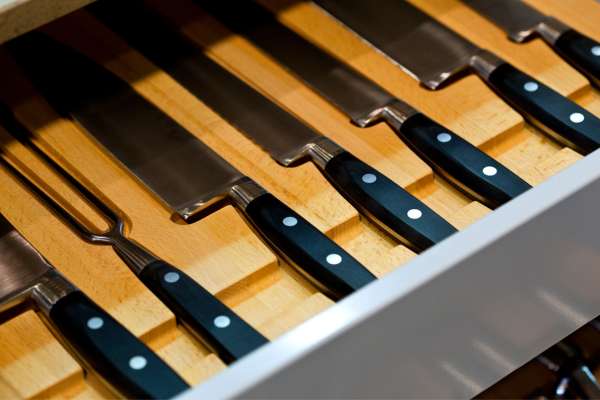
To use a chef’s knife, understanding the common angles for different knives is crucial for achieving precision and efficiency in the kitchen. The optimal angle for a chef’s knife is typically around 20 degrees, allowing for smooth slicing and chopping motions. For more delicate tasks such as peeling or paring, a smaller angle of around 15 degrees may be more suitable to ensure accuracy and control.
Holding The Sharpening Rod
Properly holding the sharpening rod is a fundamental step in the process of how to sharpen kitchen knives with a rod. To start, hold the rod firmly in your non-dominant hand, ensuring it is stable and secure. You can either position the rod vertically on a cutting board or hold it horizontally, depending on your comfort level. The key is to maintain a steady grip to prevent any slips that could lead to accidents. Position the rod at the desired angle, typically 20 degrees for most kitchen knives, to ensure consistent sharpening along the entire edge of the blade.
Using The Rod For Sharpening
Using the rod for sharpening is a straightforward but precise task that, when done correctly, can greatly improve the sharpness and functionality of your kitchen knives. Begin by placing the heel of the knife at the top of the rod, maintaining the correct angle. Gently slide the knife down the rod, from the heel to the tip, applying light but consistent pressure. Repeat this motion several times on one side of the blade before switching to the other side. It’s important to maintain a smooth, even stroke to achieve a uniform edge. Regular practice of how to sharpen kitchen knives with a rod will enhance your knife skills and keep your blades in optimal condition.
Basic Sharpening Technique
Mastering the basic sharpening technique is the foundation of effectively sharpening kitchen knives with a rod. Start by holding the rod vertically with its tip resting on a stable surface. Position the knife at the correct angle against the rod and draw the blade down and across the rod in a sweeping motion, from the heel to the tip of the knife. Repeat this process on the other side of the blade, ensuring even sharpening on both edges. It’s essential to maintain a consistent angle and pressure throughout the process to achieve a uniformly sharp edge. Practicing this basic sharpening technique regularly will keep your knives in excellent condition, making food preparation easier and more efficient.
Applying Too Much Pressure
One common mistake when sharpening kitchen knives with a rod is applying too much pressure. Excessive force can damage the blade and reduce its lifespan. Instead, use a gentle yet firm pressure, allowing the rod’s surface to do the work. The purpose of the rod is to realign the blade’s edge rather than remove significant amounts of metal. Applying too much pressure can lead to uneven sharpening and potential chipping of the blade. By using the correct amount of pressure, you ensure that your knives are sharpened effectively and safely, maintaining their sharpness and durability over time. Remember, the goal is to hone and refine the edge, not to grind it down aggressively.
Over-Sharpening The Knife
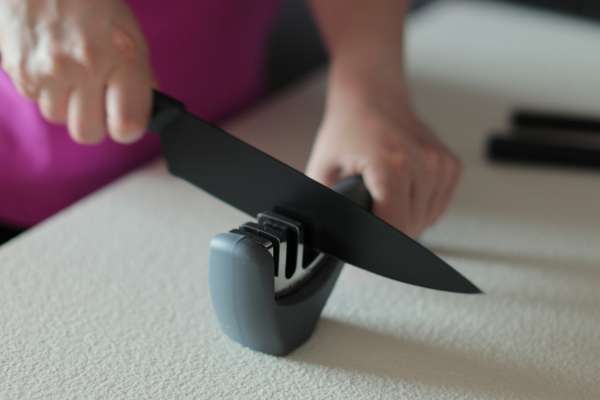
Over-sharpening can lead to the removal of too much metal from the blade, resulting in a thinner, weaker edge that is more prone to chipping and breaking. This not only reduces the lifespan of the knife but also makes it less safe to use. To avoid over-sharpening, it’s recommended to use a honing rod regularly to maintain the edge and only sharpen the knife when it becomes noticeably dull. This approach helps preserve the integrity of the blade, ensuring it remains strong and durable over time. By being mindful of the frequency and technique used in sharpening, you can maintain a balance between sharpness and durability, keeping your kitchen knives in optimal condition.
Comparison With Whetstones
Sharpening kitchen knives with a rod is often compared to using whetstones, another popular method for maintaining sharp blades. While both methods have their advantages, using a rod is typically quicker and more convenient for regular maintenance. Whetstones, on the other hand, can provide a more thorough sharpening and are ideal for repairing extremely dull or damaged blades. However, they require more skill and time to use effectively. For most home cooks, sharpening kitchen knives with a rod offers a practical solution for keeping knives sharp and ready for use, combining ease of use with effective results.
The Final Thought
Mastering the art of sharpening kitchen knives with a rod is essential for maintaining their longevity and performance. With practice and patience, anyone can learn this valuable skill to keep their knives sharp and efficient. Remember to use the correct angle and pressure while honing the blade on the rod for optimal results. Regular maintenance of your knives will not only make cooking easier and more enjoyable but also ensure safety in the kitchen.

